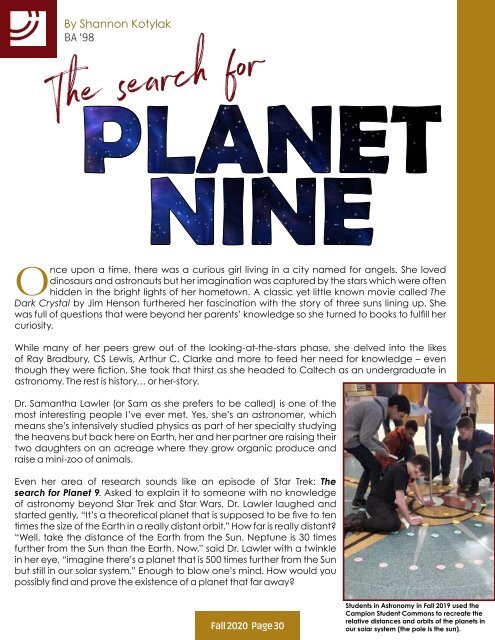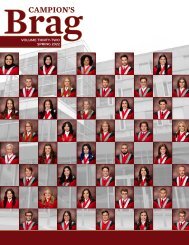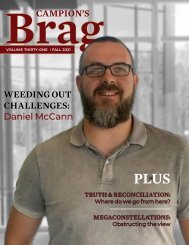Brag-Fall2020
Create successful ePaper yourself
Turn your PDF publications into a flip-book with our unique Google optimized e-Paper software.
By Shannon Kotylak<br />
BA ‘98<br />
The search for<br />
Once upon a time, there was a curious girl living in a city named for angels. She loved<br />
dinosaurs and astronauts but her imagination was captured by the stars which were often<br />
hidden in the bright lights of her hometown. A classic yet little known movie called The<br />
Dark Crystal by Jim Henson furthered her fascination with the story of three suns lining up. She<br />
was full of questions that were beyond her parents’ knowledge so she turned to books to fulfill her<br />
curiosity.<br />
While many of her peers grew out of the looking-at-the-stars phase, she delved into the likes<br />
of Ray Bradbury, CS Lewis, Arthur C. Clarke and more to feed her need for knowledge – even<br />
though they were fiction. She took that thirst as she headed to Caltech as an undergraduate in<br />
astronomy. The rest is history… or her-story.<br />
Dr. Samantha Lawler (or Sam as she prefers to be called) is one of the<br />
most interesting people I’ve ever met. Yes, she’s an astronomer, which<br />
means she’s intensively studied physics as part of her specialty studying<br />
the heavens but back here on Earth, her and her partner are raising their<br />
two daughters on an acreage where they grow organic produce and<br />
raise a mini-zoo of animals.<br />
Even her area of research sounds like an episode of Star Trek: The<br />
search for Planet 9. Asked to explain it to someone with no knowledge<br />
of astronomy beyond Star Trek and Star Wars, Dr. Lawler laughed and<br />
started gently, “It’s a theoretical planet that is supposed to be five to ten<br />
times the size of the Earth in a really distant orbit.” How far is really distant?<br />
“Well, take the distance of the Earth from the Sun. Neptune is 30 times<br />
further from the Sun than the Earth. Now,” said Dr. Lawler with a twinkle<br />
in her eye, “imagine there’s a planet that is 500 times further from the Sun<br />
but still in our solar system.” Enough to blow one’s mind. How would you<br />
possibly find and prove the existence of a planet that far away?<br />
Fall 2020 Page 30<br />
Students in Astronomy in Fall 2019 used the<br />
Campion Student Commons to recreate the<br />
relative distances and orbits of the planets in<br />
our solar system (the pole is the sun).

















